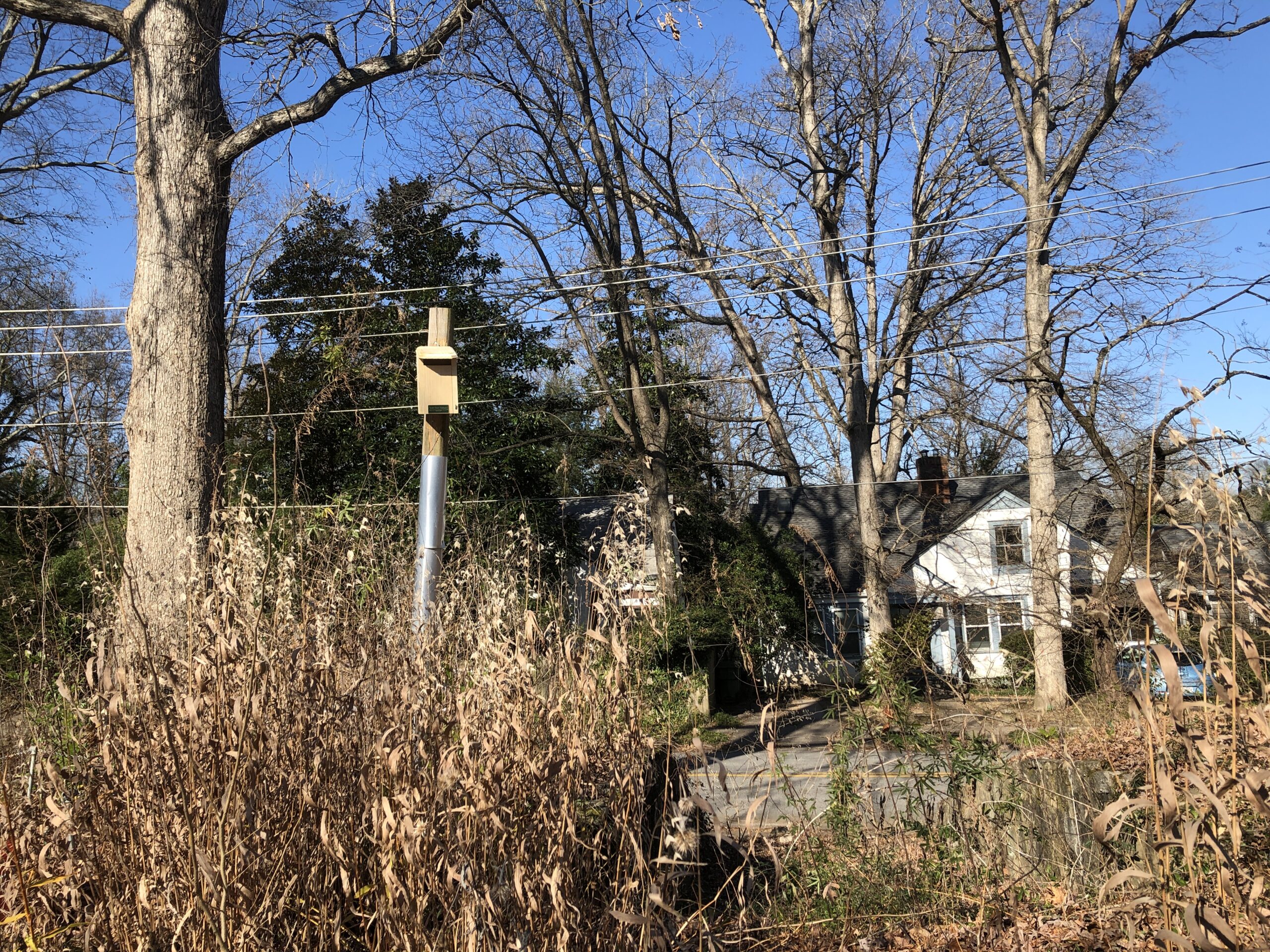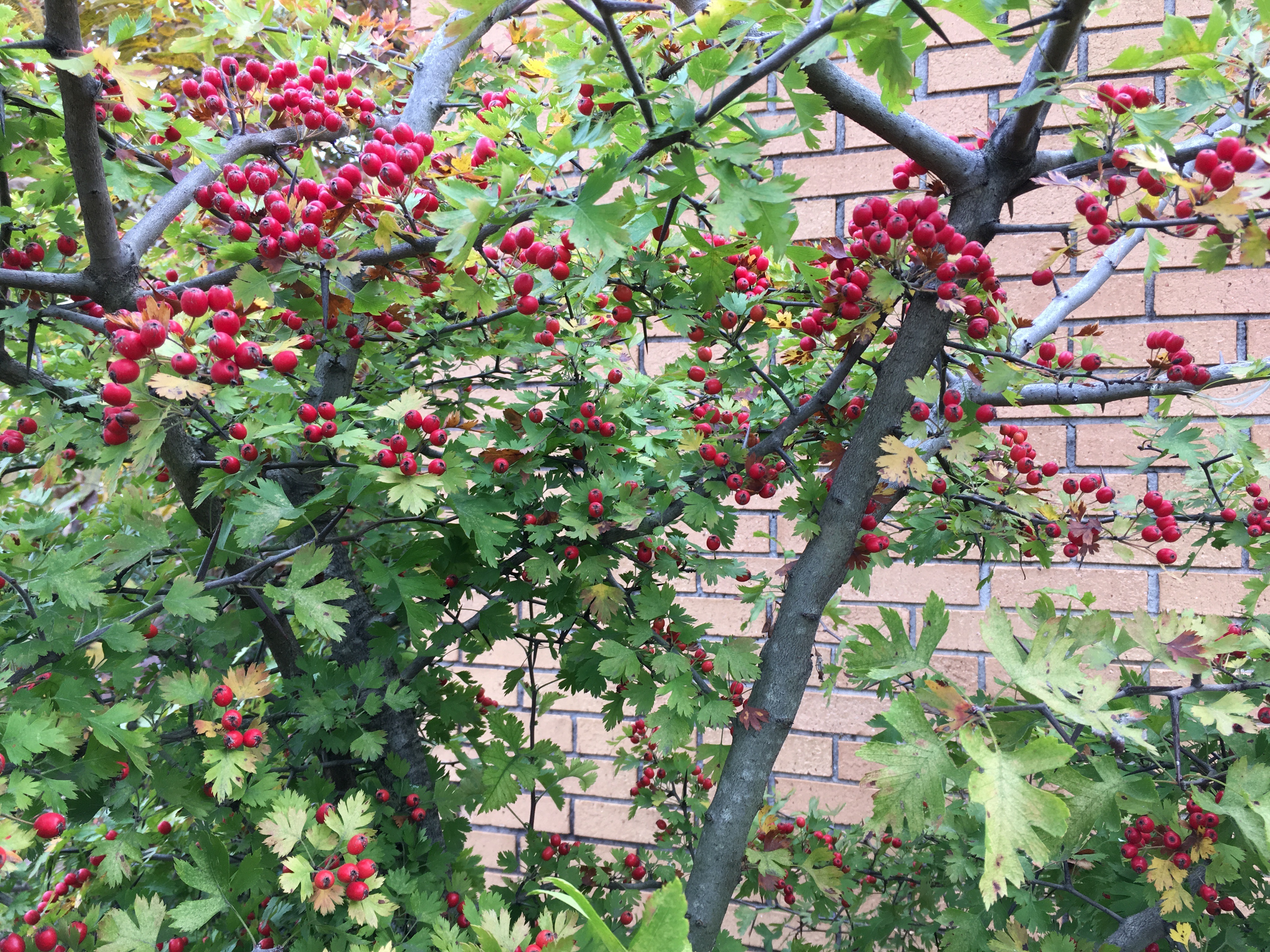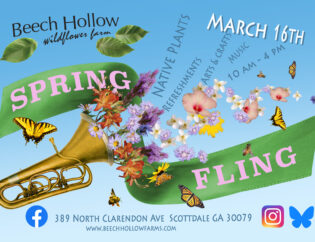

If you are a birder, you probably already know that Eastern songbird populations have declined dramatically since World War II. More information here.
Why do I need to provide habitat? Where has habitat gone? Landscape shrubbery is sparse, and often non-native; it may not have seeds, berries or be arranged in a way that offers shelter for birds and other wildlife. Lawns provide very little support in terms of food choices beyond worms and grubs, and offer no shelter.
Small streams are often "piped," or diverted to underground pipes in modern commercial and residential developments, leaving no water resources for wildlife.
The GOOD news is that, yard by yard, it is possible to provide many things that migratory and resident bird populations need to live and raise young. Birds need water sources to replace the piped streams; They need safe and secure nesting sites to rear their young; They need cover to hide from predators such as cats and hawks; They need a steady, year-round supply of food for themselves and their young.

Habitat:
Choosing varied plants that occupy different layers in a yard or garden creates a border of more and higher quality urban bird habitat. Tall trees can be placed towards the property line with shorter subcanopy trees and shrubs facing the house or garden to create a multilayer border with plenty of perches and nesting sites. Placement of tall trees on the northern edge of the property will prevent them from shading out the lawn or garden. Include some thorny trees, such as Hawthorns (Crataegus spp.), which are good for protective nesting sites, with the added benefit of providing plentiful berries in the late summer and fall.
Layering promotes:
- Diversity of plant material, creating a diversity of insect food.
- More potential feeding and nesting sites.
- Greater quantity of insect food generated by sub canopy layers of herbaceous plants.
- Greater number of fruit bearing shrubs.
- Different types of nesting and roosting sites that can accommodate a greater diversity of bird species.
- More possible cover from predators such as hawks from above, or cats from below.
- Leaf litter under shrubs which provides insects, grubs and worms.
Food:
- Berries from a variety of shrubs and brambles can and should be available from late spring through winter
- Dewberry, blackberry, or strawberry produce berries from spring through mid summer.
- Dogwood, Devil's Walking Stick, viburnums, greenbriar, poison ivy, etc. provide fruits from late summer through fall.
- Hawthorns, beautyberry, some viburnums, chokeberry, crabapples, and hollies provide winter-persistent fruits that are important sustenance for many birds during the lean cold months. They also host hundreds of species of caterpillars which are a crucial protein source for developing chicks.
- Native plants provide native insects and caterpillars, as well as edible seeds and fruits, for many songbirds.
- Leaf litter provides important food sources such as grubs, insects and worms to ground feeding birds like robins, thrashers and towhees.
- Native grasses provide nesting materials and edible seeds.
Nesting:
Cavity nesting birds
Snags, or standing dead trees, are important nesting sites for many bird species, but are difficult to accommodate in an urban setting. The proper placement of the right nesting box can sometimes replace this natural feature of woodlands. Woodpeckers, nuthatches, owls, chickadees, tufted titmouse, kestrels and purple martins use snags.
A correctly dimensioned box should be placed in the correct habitat and at the correct height for each species desired. For instance, bluebirds prefer open habitats like fields; chickadees prefer mature woodland or border woodland type habitats. Go to the "Birdhouses" pdf and NestWatch for more information.
Cup and/or Saucer Nesting Birds
Undisturbed shrub areas and a subcanopy of small trees such as dogwood, viburnums, or hawthorns provide excellent nesting sites for a wide variety of passerines and songbirds including robins, thrashers, cardinals and mockingbirds. Nesting materials can be provided in the garden by leaving an unmowed area where dried native grasses and small twigs are allowed to collect for nest building. A tidy lawn and garden may look nice to humans, but provides little in the way of nest building materials. Instead of bagging yard waste, create a small brush pile in the corner of the backyard and let native grasses go to seed and turn brown for the winter before trimming them back in spring.
Ground Nesting Birds
Brush piles and large patches of ferns or low-growing, dense shrubs can offer important cover for ground nesting birds such as towhees. Ground nesting species are at a severe disadvantage with neighborhood cats if this type of cover is not provided.
Water:
Bird baths should be made of non-slip materials like cement or dull ceramic glaze rather than slick or glassy materials. They should be shallow: 2 inches deep or less with gradually sloped edges to accommodate small birds as well as larger songbirds.
- Pedestal birdbath is safer from cats.
- Water should be cleaned every two days to:
- Keep mosquitoes from breeding.
- Bacteria from developing and making birds sick.
- Cleaning the birdbath weekly with a stiff brush will keep bacteria down as well.
Place birdbath:
- In an open area that is clear of hiding places for cats.
- Near small overhanging tree branches that allow birds to preen and dry off; they are ungainly and easy prey with wet feathers.
- Dripping or trickling water sounds attract more birds to a water source.
Sources:
Ehrlich, Paul R., Dobkin. David S., and Wheye, Darryl. The Decline of Eastern Songbirds. http://www.stanford.edu/group/stanfordbirds/text/essays/Eastern_Songbirds.html. Stanford University. Stanford. 1988
Tallamy, Douglas. A Call for Backyard Diversity. http://www.americanforests.org/magazine/article/backyard-biodiversity/ 2009.









